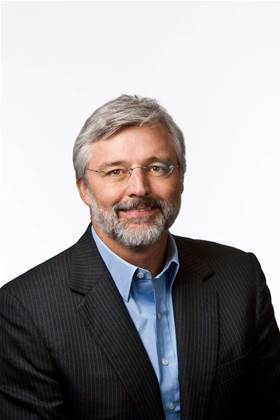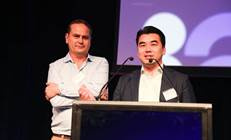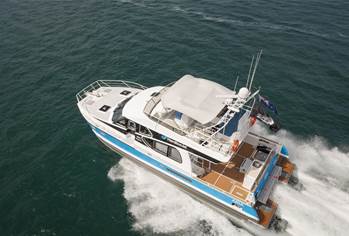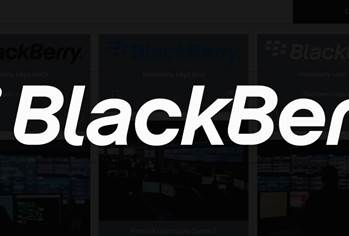NetSuite and SAP went head to head last week with simultaneous user conferences in the US. NetSuite is taking on SAP in one of its key target markets: manufacturing. Its weapons include new cloud-based products and plenty of insults.

NetSuite Manufacturing Edition, billed as a “next-generation” cloud solution for the sector, was announced at SuiteWorld, following two years of stealth development.
Manufacturing has been labeled "the last industry that is preparing to move to the cloud". According to Gartner, nearly half (47 percent) of manufacturers worldwide will be using or piloting SaaS applications by 2015, up from just 2 percent in 2010.
NetSuite Manufacturing Edition represents "the next transformation" for both the company and industry, chief executive officer Zach Nelson said in his conference keynote.
A key part of that transformation is a new partnership with Autodesk, the design and engineering software company. Autodesk's PLM 360 cloud-based product lifecycle management system will now be integrated with NetSuite.
Data will flow both ways. Design changes made in Autodesk are automatically reflected in the product's costings in NetSuite, for example. If the cost of components from suppliers change, that's immediately reflected in Autodesk, allowing designers to alter the product to maintain its profitability.
New functionality in NetSuite Manufacturing Edition itself includes: the ability for production managers to define operational parameters such as setup time and run rates to assist with the scheduling and routing of work; creating multi-step assembly processes; and new multi-step functionality for rolling-up standard costs and work-in-process inventory tracking.
SAP is the main enemy
Throughout SuiteWorld, SAP was the target of barbed comments. The company was portrayed as a villain — "You can call me Send Another Payment. Get it? SAP!" — in an elaborate Batman-themed video introducing the keynote by NetSuite's founder, chief technology officer and chairman Evan Goldberg.
SAP wasn't the only target for ridicule. "Salesforce-com is not CRM," said Nelson. "Were the only CRM system that has customer data in it, it's called orders."
When Nelson highlighted NetSuite's 2012 global revenue growth rate of 49 percent — making it the fastest-growing company in the financial management software market, according to Gartner — it came with a dig at Microsoft, whose growth is just a tenth of that. "They shouldn't call [it] Microsoft Dynamic, they should call it Microsoft Static," he said.
But Nelson hammered the anti-SAP message. "SAP is talking about databases," he said in his keynote, but his company was talking about applications. "There's a database underneath it, but who cares what it is?"
Two-tier ERP
The database underneath NetSuite is, of course, Oracle. NetSuite was initially funded by Oracle founder Larry Ellison, and he remains a prime shareholder. So how does NetSuite position itself against SAP without also attacking Oracle? By promoting a two-tier approach.
"The idea of standardising on a single platform globally has failed," Nelson told journalists. "Two-tier ERP typically gets deployed as a financial consolidation play. What you're seeing now with SuiteCommerce is two-tier ERP, but it's a functional install."
That might mean running NetSuite for operational ecommerce and POS in certain regions, and Oracle GL for global consolidation.
"Frankly, I think the way MRP [manufacturing resource planning] is going to roll out is exactly the same. People have enormous amounts of money invested in SAP manufacturing systems, and NetSuite's not going to replace those. They're going to put NetSuite into MRP applications and smaller hubs [and] manufacturing facilities," Nelson said.
One of NetSuite's Australian reference clients for this two-tier strategy is Williams-Sonoma, a high-end American homeware empire with USD 4 billion in revenue, and their expansion into Australia with four of their brands opening stores in Sydney’s Bondi Junction: Williams-Sonoma, Pottery Barn, Pottery Barn Kids, and West Elm.
With leases already signed and just three months until the opening date, a combined ecommerce, point of sale (POS) and ERP system couldn't be delivered using Williams-Sonoma's existing Oracle systems.
But using NetSuite's SuiteCommerce, Wiliams-Sonoma said with close support from NetSuite staff they developed what they needed for launch within the three-month timeframe: all four stores' POS systems, and all four ecommerce websites in nearly pixel-perfect form — and all that was running off a single SuiteCommerce back end. About two months was spent on development and one month on quality assurance (QA).
Disclosure: Stilgherrian travelled to SuiteWorld in San Jose as NetSuite's guest.


_(22).jpg&h=140&w=231&c=1&s=0)
_(20).jpg&h=140&w=231&c=1&s=0)

.png&h=140&w=231&c=1&s=0)



_(26).jpg&w=100&c=1&s=0)

 iTnews Executive Retreat - Security Leaders Edition
iTnews Executive Retreat - Security Leaders Edition












_(1).jpg&h=140&w=231&c=1&s=0)



